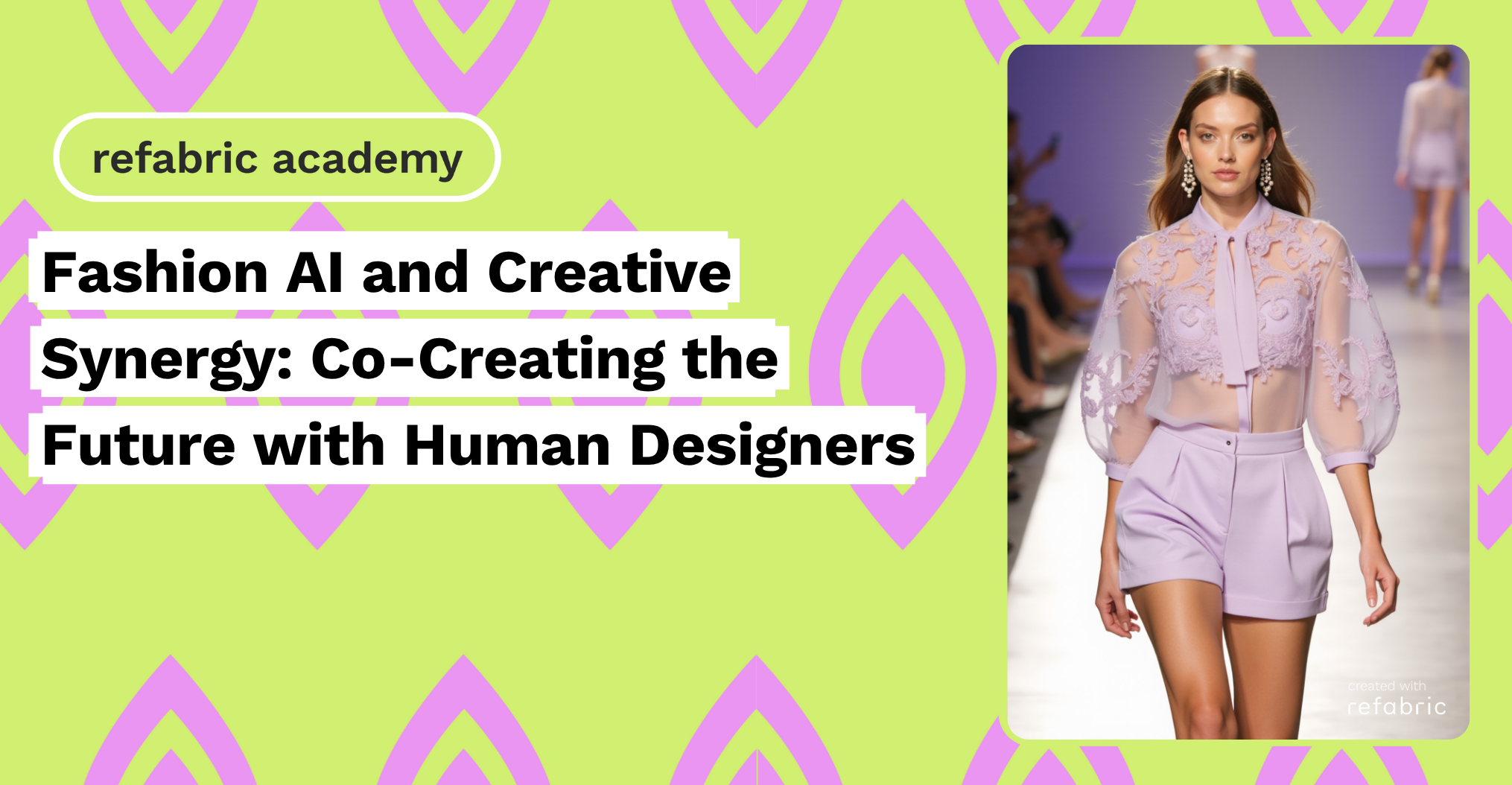Fashion AI is transforming the design process by introducing intelligent tools that support and enhance human creativity. Rather than replacing designers, these technologies act as creative collaborators; analyzing data, generating visual references, and offering inspiration grounded in real-world trends. The result is a smoother, faster, and more imaginative design pipeline that lets creativity take center stage.
The Rise of Fashion AI in Creative Workflows
One of the most common misconceptions about fashion AI is that it aims to automate the role of designers. In reality, AI is most effective when it complements human input. Designers bring cultural awareness, intuition, and emotional intelligence, qualities that machines cannot replicate. What fashion AI offers is a way to offload repetitive tasks and unlock new perspectives through data-driven insights.
For example, instead of spending hours manually researching pattern trends or color palettes, designers can use AI to scan thousands of fashion images, runway shows, and street style photos in seconds. AI tools can surface patterns in consumer behavior and offer suggestions that spark unexpected ideas. The creative direction still lies with the designer, but AI fuels the journey with speed and insight.
Fashion AI as an Idea Generator
Creativity often starts with inspiration. Fashion AI can serve as a virtual moodboard, pulling together concepts from across digital spaces. These tools are particularly valuable in early-stage brainstorming sessions, where designers are exploring different styles, aesthetics, and narratives.
With generative AI capabilities, fashion designers can create design mockups based on specific inputs, such as “asymmetrical evening dress with recycled fabrics” or “90s-inspired streetwear with neon accents.” AI then produces visual suggestions that the designer can refine, remix, or discard. This back-and-forth encourages experimentation and helps push creative boundaries without exhausting resources.
Empowering Personalization at Scale
Today’s consumers crave uniqueness. One of the most exciting opportunities of fashion AI is its ability to support mass personalization. By analyzing user data, from purchase history to style preferences, AI can help brands create design variations tailored to specific customer segments.
This makes personalization both scalable and efficient. Designers can experiment with silhouettes, colorways, or graphics that appeal to niche audiences without having to reinvent their entire collections. In turn, this strengthens customer loyalty and reduces overproduction.
Streamlining the Design-to-Production Pipeline
The synergy between human designers and fashion AI doesn’t stop at the concept stage. AI-powered tools are now integrated into every step of the fashion workflow, from sampling and material selection to virtual prototyping and forecasting. This integration not only speeds up development timelines but also supports more sustainable choices.
Designers can preview how a garment will look and move on a digital model before it’s ever sewn. They can simulate how certain fabrics will drape or respond to motion. AI can even flag potential fit or construction issues before production begins. These efficiencies reduce waste, improve quality, and help bring products to market faster.
The Emotional Touch: Why Human Designers Matter
Despite the power of AI, the human element in fashion remains irreplaceable. Storytelling, emotional connection, and cultural resonance are all rooted in human experience. Designers shape the identity of a collection. They interpret the times we live in. They translate feelings into fabric.
Fashion AI provides tools. Designers bring meaning.
This balance is what defines the next era of fashion: not man versus machine, but human and machine, working together. When used thoughtfully, AI becomes a co-creator, not a competitor.
A Future Built on Partnership
The future of fashion will be defined by the partnerships we build, with each other, with technology, and with the planet. As fashion AI continues to evolve, so too will the ways designers use it to dream, build, and inspire.
For creative professionals, embracing fashion AI doesn’t mean giving up control. It means gaining new tools to express vision, save time, and make smarter choices. It’s about working with technology to design not just better clothes but a better industry.
At Refabric AI, we believe this synergy is the key to the next generation of design: empowered by data, guided by creativity, and open to endless possibility.
